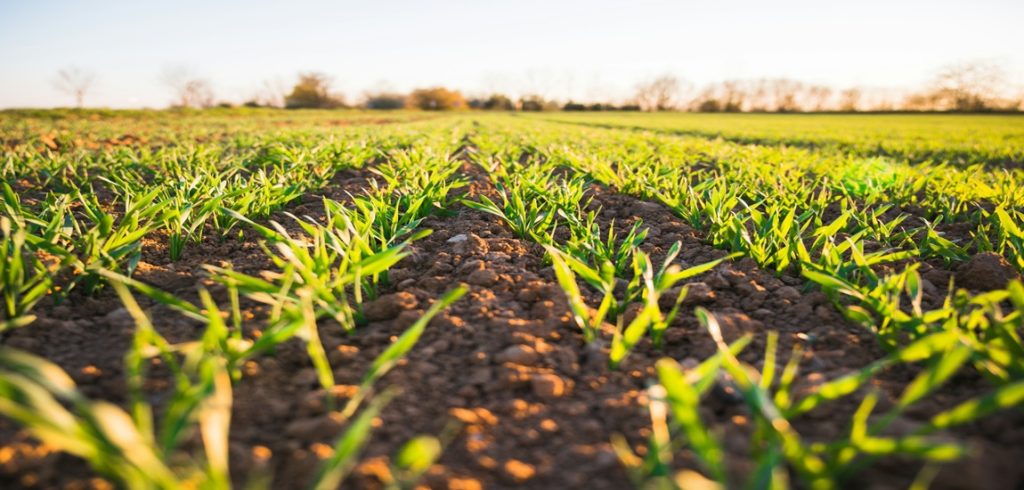
Pic Courtesy - UnSplash
In recent years, the incorporation of Artificial Intelligence (AI) into agribusiness has transformed the way we approach agriculture. With improvements in machine learning algorithms, data analytics, and sensor technologies, AI has become a vital tool for farmers and agribusinesses all over the world.
Let’s look at five significant ways AI is changing the landscape of agriculture:
1. Aids In Crop Precision: AI improves crop precision by giving farmers with critical information about soil health, fertilizer levels, and optimal planting circumstances. AI systems may offer precise suggestions for seed selection, irrigation timing, and fertilization techniques by analyzing massive volumes of data acquired from diverse sources such as satellites, drones, and in-field sensors. Farmers may improve resource usage, reduce waste, and eventually increase crop yields by utilizing AI-powered precision agriculture approaches.
Case Study: Bayer’s FieldView Platform
Challenge: Field unpredictability makes it difficult for farmers to maximize inputs such as fertilizer and water.
Solution: FieldView analyzes data from soil sensors, drones, and satellite images using artificial intelligence and machine learning.
Result: Farmers gain insight into specific regions of their fields, allowing them to apply fertilizer and water precisely where needed, eliminating waste and increasing yields by 10-20%.
2. Helps In Crop Monitoring: Crop monitoring throughout the growth cycle is critical for detecting possible problems such as pests, diseases, and environmental stressors. AI-powered systems with computer vision algorithms can evaluate images acquired by drones or ground-based sensors to detect irregularities in crop health and development. Farmers can respond quickly to new hazards by continuously monitoring fields in real time, reducing crop losses and assuring optimal yield.
Case Study: Taranis’ AI-powered Disease Detection
Challenge: Early diagnosis of crop diseases is critical for limiting damage and maximizing treatment.
Solution: Taranis uses drones outfitted with AI-powered cameras to take high-resolution photos of fields.
Result: The AI analyzes photos to detect illnesses early on, allowing farmers to take focused treatment while reducing overall fungicide consumption by 20-40%.
3. Makes Yield Prediction: Accurate yield forecast is critical for making informed decisions in agribusiness, from harvest scheduling to supply chain management. AI algorithms educated on historical data, weather patterns, and agricultural traits can accurately anticipate yields. Farmers can use predictive analytics to better anticipate production changes, manage resource allocation, and negotiate contracts with purchasers. Furthermore, yield prediction models help agri-businesses plan investments, manage inventory, and avoid market risks.
Case Study: IBM’s Watson Decision Platform for Agriculture
Challenge: Uncertain yield projections result in erroneous planning and potential market losses.
Solution: Watson uses historical data, weather forecasts, and real-time sensor information to forecast crop yields with great accuracy.
Result: Farmers can improve resource allocation, make better pricing and sales decisions, and reduce post-harvest losses.
4. Increases Efficiency: AI-driven automation has the potential to streamline many elements of agricultural operations, resulting in considerable increases in efficiency and output. AI-powered technology, such as autonomous tractors and robotic harvesters, smart irrigation systems, and precision spraying drones, can complete jobs faster, more accurately, and consistently than manual labor. Agribusinesses can reduce operating costs, boost output, and achieve greater scalability by minimizing reliance on human involvement and improving workflows.
Case Study: Blue River Technology’s LettuceBot
Challenge: Manual weeding in lettuce fields is time-consuming and costly.
Solution: LettuceBot is an autonomous robot that uses machine vision and artificial intelligence (AI) to detect and clear weeds while avoiding lettuce plants.
Result: This technique cuts labor expenses by 80%, improves weeding accuracy, and frees up people to perform other activities.
5. Helps In Sustainable Farming: Sustainability is a major problem in modern agriculture, with stakeholders striving to reduce environmental effect while retaining profitability. AI provides novel solutions for supporting sustainable farming practices by improving resource use, lowering chemical inputs, and cutting greenhouse gas emissions. AI-based models, for example, can optimize irrigation schedules to save water, offer organic pest control approaches to reduce chemical use, and help with crop rotation schemes to improve soil health. By encouraging sustainable practices, AI enables agribusinesses to meet consumer demand for ethically produced food while also protecting natural resources for future generations.
Case Study: Indigo Agriculture’s Carbon Credits Program
Challenge: Traditional farming practices may add to greenhouse gas emissions.
Solution: Indigo’s technology employs artificial intelligence to assess soil data and offer carbon sequestration strategies.
Result: Farmers earn carbon credits while improving soil health, lowering their environmental impact, and earning extra money.
AI has enormous potential for changing agribusiness by improving crop accuracy, monitoring, yield prediction, efficiency, and sustainability. As the agriculture sector embraces technological innovation, the use of AI-powered solutions is expected to result in considerable increases in productivity, profitability, and environmental stewardship. By leveraging AI, farmers and agribusinesses can negotiate the difficulties of modern agriculture with confidence and resilience, assuring the industry’s long-term viability and prosperity.




More Blogs
Expanding Globally: Navigating Challenges and Leveraging Strategies
7 Ways of Making Progress: A Startup Expert’s Guide
AI in the Insurance Business: Revolutionizing the Industry